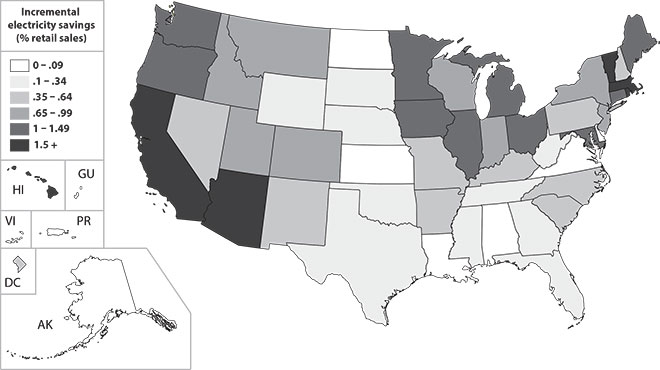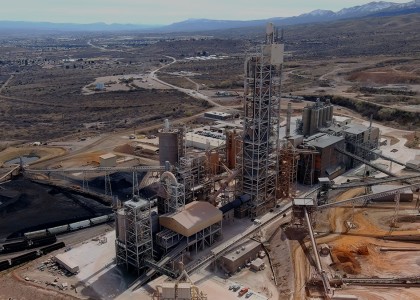We tend to talk about energy savings in two ways. There is the total annual impact of savings, made up of layers of savings from programs implemented in the past but still saving energy today, and there are incremental savings, or savings attributed to new programs implemented in a given year. At ACEEE, we track incremental savings within our State Energy Efficiency Scorecard. These data points put states on an even playing field, recognizing what a state has achieved in a given year regardless of what it has done in the past.
Source: Data from ACEEE’s 2015 State Energy Efficiency Scorecard
In 2014, we saw incremental electricity savings continue to rise – up nearly 6% from the year before. And these savings aren’t just coming from long-regarded leaders in energy efficiency like California and Massachusetts. Utilities and program administrators in states all across the country achieved electricity savings in 2014.
In the northeast, Rhode Island achieved record-breaking electricity savings of over 3.5% in 2014. Another fifteen states achieved savings of over 1%. We also saw states with emerging efficiency programs make steady progress. Arkansas, which established energy efficiency goals in 2010, achieved savings of more than 0.5%—four times the electricity saved in the state just two years earlier.
These savings are driven by well-crafted policies encouraging energy savings, business models that reward utility investment in efficiency, and strong support from policymakers, regulators, businesses, and residents. As more states put these durable policies in place, we expect that electricity savings will continue to rise in the future.
For more on state energy efficiency savings and the policies and programs that drive them, explore the State and Local Policy Database.
Data Points is a blog series focusing on the graphs and other images that tell the energy efficiency story.



